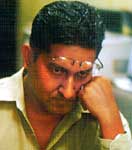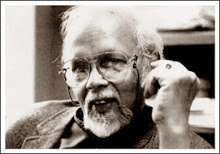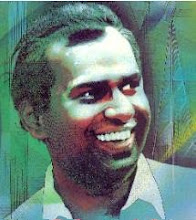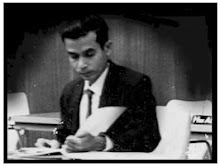Author: Ranga Chandrarathne
Source: Sunday Observer
Date: 27/07/2008
|

Prof. Ashley Halpe
|
Prof. Ashley Halpe became a Professor of English at the tender age of 31 thus becoming the youngest professor in the country. He is currently the most senior Professor of English, and can fittingly be described as the doyen of English Education in Sri Lanka.
Professor Halpe’s contribution to the corpus of work is substantial and of lasting value. He served in academia holding many positions including those of Dean, Faculty of Arts at the University of Peradeniya, Head of the Department of English for over twenty-five years and concurrent Head of Fine Arts for several years and as visiting professor in numerous foreign universities.
He has authored a substantial body of books, including creative works, and academic papers besides translations of Sinhalese works into English and has directed over a dozen theatre productions.
Q. Why do you think Sri Lankan Literature both in Sinhala and English is increasingly becoming one-dimensional and imprisoned within the context of an island mentality and little known beyond our shoreline? Some have observed that Sri Lankan writers’ confining themselves to anecdotal writing have contributed to this imperfection. Comment.
A: Well, I do not think it has been becoming increasingly one dimensional. Writing today actually reaches in many different directions. For instance, there is Tissa Abeysekera’s writing in his three-part novel in English, In my Kingdom of the Sun, and poetry such as that of ‘Rajan Perera’, Lakdasa Wickramasingha and Richard de Zoyza where there is exploration of varied experiences and forms of language.
 There is Carl Muller’s melding of several registers of the English used in this country to match the range of experience he covers in his works, as in The Jam Fruit Tree, Yakada Yaka, Colombo and The Children of the Lion, and the lively exploration of theatrical idiom by several writers from Ernest MacIntyre to Ruwanthi de Chickera.
There is Carl Muller’s melding of several registers of the English used in this country to match the range of experience he covers in his works, as in The Jam Fruit Tree, Yakada Yaka, Colombo and The Children of the Lion, and the lively exploration of theatrical idiom by several writers from Ernest MacIntyre to Ruwanthi de Chickera.
In Sinhala, you get writings such as the experiments with language of Ajith Tilakasena, Eva Ranaweera and Simon Nawagaththegama in Dadayakkaraya, the poetry of Parakrama Kodituwakku, Buddhadasa Galappathy - a list would be lengthy.
So you find there is the opening out. And an opening out did take place in its own way in the older literature of Martin Wickramasinghe, Siri Gunasinghe and Gunadasa Amerasekara in Sinhala or R.L. Spittel, S.J.K. Crowther et al in English. They made a very big input exploring Lankan experience certainly. But now people are certainly moving the frontiers.
I would also say looking at those very writers that there isn’t a confinement to anecdote. There is, sometimes, experimental exploration even of experience and while granting you there is a lot of anecdotal writing, a lot of narrative, that’s true of the broad spectrum of writing anywhere.
Q. How do you think Sri Lankan writers could cross National, Geographical, Cultural and Linguistic boundaries?
Answer: I wouldn’t make a programme of it or make any prescription. Because I think that it is something that happens according to the sensibility of the writer and his experiences. I have implied in my last answer that crossing occurs.
It happens inevitably as in the story Three Cities by Sumathi Sivamohan where a diasporic character, the protagonist, goes from Jaffna to Colombo and then to Paris, where crossing occurs as a result of “ethnic” trauma. Then you get the effect on our writers of diasporic experience for other reasons.
There are people who have just gone for academic reasons or found more space for writing in foreign environments. Writers like Yasmine Gooneratne, who has now come back, Chitra Fernando, Chandani Lokuge, and Ernest MacIntyre in Australia and across on the other side of the world, people like Romesh Gunasekara and Shyam Selvadurai. Michael Ondaatje was born in Sri Lanka but says he found himself as a writer in Canada.
His first well-known novel In the Skin of a Lion, was set in Toronto. He comes back to Sri Lanka though in Anil’s Ghost and The Cinnamon Peeler (poetry); In Divisadero he goes out again. There is the “Sun Man” in exile, Rienzie Crusz ... our expats have an important place in the picture.
So there is no rigid limit that binds the writer. Some writers cross limits by exploring the other areas of consciousness which would not be limited by local and cultural boundaries. It is wide open.
Q. How can Sri Lankan writers in English in general and especially the Diasporic writers, in particular, use the English language to textualise a discrete Sri Lankan sensibility?
A: This is something which bugs me a lot. What is a distinctively ‘Lankan’ sensibility? For that matter do we judge Lawrence by distinctively ‘English’ experience? I think what happens is that the sensibility that gets expressed can have a distinctive ‘Lankanness’ or ‘Londonness’ or whatever.
That is simply the part of the nature of personality and therefore of expression. There are times when language is modified by the writer’s own roots in local language or local cultural experiences such as in Tissa Abeysekera’s In My Kingdom.
You find in Jean Arsanayagam, Lakdasa Wickramasingha and even in the older Patrick Fernando moments where the writer uses something that’s right out of the Sri Lankan world.
For instance, one image in Patrick Fernando comes from the kitchen: “The sky cracked like a shell again and the rain poured through” which exactly echoes the splitting of a coconut. And then Lakdasa speaks of a “behind shed” (Pitipasse or Pilikanne Maduwa). So it just happenes according to the possibilities of situation and you find a variety of expressions.
Q. From the colonial era to the present, how do you perceive the changes that have been taken place in Sri Lankan Literature in English? Do Sri Lankan writers devise a unique language and an idiom that is capable of expressing authentic Sri Lankan experience although English has been and is used by less than 3% of the Sri Lankan population?
A: It is now quite well known that in the early colonial period Sri Lankan writers were strongly influenced by and sought to imitate English models. This is particularly true of writers in English who wrote verse which resembled Victorian ‘Album Verse’ in English and of sentimental or didactic novels in Sinhala.
Then there was a significant change with an increasing sense for the circumambient reality and that comes into for instance, writings by R.L. Spittel and Lucien de Zilwa. Thus Spittel brought the world of the Veddhas into English Literature.
Just as George Keyt adventured into modernism in art, he also made contact with French writing and was influenced by symbolistic writing while fusing with the idiom of Tagore in his three volumes of poetry published in the 1930s.
Ten years earlier, S.J.K Crowther, wrote a satiric novel, The Knight Errant on the vicissitudes of a young man who rises through the social classes. H.E Weerasuriya, another person who looked at what was happening to the middle class, wrote The Trousered Harijan.
Well, that was the beginning of the change to a greater sense of the reality. This really became dramatic with the encountering of social drama which was vivid in the writing of Lakdasa Wickremasinghe in the 1960s and early 70s and then in writing that was in response to the 1971 insurrection.
At that stage Sri Lankan writing seems to come of age and confronts its contemporaries.
In fiction, this is reflected in Sarachchandra’s transcreation of his Heta Echchara Kaluwara n’ as Curfew and Full Moon. I think that from that point on, our writings have been in constant encounter with the current and reflect current reality and current issues. That continues to broaden the scope of Sri Lankan writing.
Q. Does this find expression in your own creative work?
A: Definitely. After the April 1971 insurgency I was struck dumb and then wrote The Dream which was the first of a series of poems on that event. To quote a brief example: ...Young bodies tangled in monsoon scrub or rotting in river shallows, awaiting the kind impartial fish, and those not dead - numb, splotched faces, souls ravaged by all their miseries and defeats In another poem titled Memoranda of July I revisited ‘Black July; ... About sacks on shoulders in orangeness About hands slipping from Bloodstained branches Welcome, torturers and redeemers Then the Bheeshana Kalaya has evoked a long poem I call Pasan.
I quote: Imagine ahead The eyes, the eyeballs finely veined in delicate pink over eggshell blue, in one corner, the left, a black clot with an orange-red surround, jagged, wicked; the eyeballs out, pushed out, globed, the pupils black black points in a brownblack circle circled by the veined whites the blooded lids the ditchsockets parted by half a nose above blubbery leaky lips over a most beautiful firm strong chin above Rags and tatters A painting by the same name responds to traumatic experiences of our country from as early as the 1950s to 1983.
Q. You have translated a number of Sinhalese writings into English including novels and medieval Sinhala poetry such as the Sigiriya poems. What is the role of the translator in enriching collective experiences of a Nation and introducing hybridity, cultures, mentalities, perceptions, processes of thinking etc. especially in the present context of acrimonious ethnic relationships?
A: I just enjoyed it. Even as a student I enjoyed translation exercises we worked with in the classroom. This continues in my life. I was brought into translation by Sarachchandra inviting me to try Martin Wickramasinghe’s Leli for an anthology and that attracted me to the activity of translation from Sinhala. The grappling with the English language to try to make it express the sensibility and the idiom of Sinhalese speaking Sinhalese was a challenge that really tested me.
It also made me feel the immediacy of Sri Lankan experiences in such writings. Sarachchandra next put me on to Martin Wickramasinghe’s Viragaya and Martin liked it very much.
Since then I have taken to things on commission or request eg. when I was invited by the editor of the UNESCO Volume of Modern Sri Lankan Writings Christopher Reynolds and the committee to undertake some stories and poems for the book and in the end I did 11 pieces in the volume.
Then in the same period, the chance discovery of E.F.C. Ludowyk’s comment on a Sigiri poem in his The footprint of The Buddha fired me with enthusiasm for the Sigiriya poems. I really enjoyed the process of translating and I went into all 700 verses published by Paranavithana in Sigiri Graffiti. It took me years. I did not rush it and I was not under any pressure.
I was doing it for myself really. In 1996 I published them as Sigiri Poems. From thinking about my own experience in world literature through translations, I realised that what we read, enjoyed and in fact, were educated by, was not originally only English but translations of Greek, Roman, French and Russian works into English.
We would not have had the cultural experience we were able to grow on without those resources. So I realised that what the translator does is to explore the territory for his generation and share the discovery with others. Of course, no translation can be final and perfect.
There is a saying in Italian, tradutore tradittore meaning the translator is a traitor. It was Oscar Wilde who quipped that a translation is like a woman: either beautiful or faithful. My own philosophy of translation which I have picked up from somebody was to try to translate imagining what the original author might have written if he wrote in the new language.
Q. How do you appraise the overarching influence that Prof. E. F. C. Ludowyk had on the Sri Lankan theatre in English of his time and also Sri Lankan theatre in general especially in the context of his pioneering productions at the University of Ceylon?
A: Ludowyk has had an enormous impact on Sri Lankan theatre. He made an impact beginning with an adaptation of a French play into English and set in Colombo, He comes from Jaffna. His work had two values: one was that he brought contemporary world drama to the Sri Lankan theatre world through the medium of English in productions of the University’s dramatic society, the Dram Soc.
In the process he also infused his enthusiasm into a large number of performers some of whom turned into directors in the future. Another impact was to give people a sense of standards in performance and production that spread among all these people so that English theatre provided Sri Lankan audiences with genuine contemporary experience both in terms of performance values and in actual plays performed.
He also had an impact on Sinhala theatre because Sarachchandra and the Sinhala Ranga Sabha invited Ludowyk and his wife to be part of their group. Sarachchandra says in his contribution to the Ludowyk Felicitation Volume that watching Ludowyk’s rehearsals and performances gave him a grasp of values in performance and direction which had a vast influence on his own productions.
Another thing that Ludowyk did for theatre in Sri Lanka which had a value for both Sinhala and English theatre was bringing Jubal, a professional director, to Sri Lanka.
Jubal further developed that sense of professionalism which Ludowyk had already introduced to the amateur theatre. Since he also worked with famous Dayananda Gunawardena and directed a Sinhala translation of Moliere ( Wedahatana), it percolated into Sinhala theatre.
Generations continued to pass on the torch. Immediate beneficiaries, people who worked with Ludowyk and Jubal at the university, themselves brought more modern theatre to Sri Lanka. Dennis Bartholomeusz started the Aquinas Dramatic Society which did some excellent productions such as The Wild Duck and The Lark. Another group formed “Stage and Set” which nurtured Ernest MacIntyre and Karen Breckenridge.
Q. Vindicating the universally acclaimed fact that Shakespeare is for all times, Sri Lankan audience have also enjoyed Shakespearean plays both in their original form and in numerous adaptations.
The salient fact that can be observed in adaptations is the assimilation of theatrical forms and stylistic elements from a particular tradition in the host country into the production. What is your view on the use of theatrical elements such as those of Sanskrit theatre, Noh, Kabuki, and Kathakali etc?
A: There is an ongoing tradition of Shakespeare performance and production in this country. There is experimentation in both Sinhala theatre and English theatre in productions of Shakespeare.
In a sense Sinhala theatre has had a tendency to be influenced by European models. While they have given powerful performances in specific roles the productions have not been particularly innovative except for, I think, two outstanding examples: G.K. Haththotuwegama’s production of Hamlet with the university students of Peradeniya where his experience with street drama melded with his sense of English theatre and was of a very lively translation which he did with two others, Gamini Fonseka, a lecturer and Lakshman Fernando.
He also collaborated with Fritz Bennowitz. G.K’s own production of A Mid Summer Night Dream was also a very lively production. In English language theatre, there certainly were old fashioned costume productions performed in what used to called the Teapot style of acting and also much more modern attitudes to be performance.
There have been experiments with using Sri Lankan costumes like our production of Twelfth Night for the Ludowyk centenary and also the incorporation of elements of the ritual theatre like Kolam and Thovil into theatre. This gives new energy to productions of Shakespeare in this country.
Q. With the broad-basing of the use of the English language especially in electronic media, internet, and in short messages (sms) etc., there is a steady decline in the standards of language sometimes going to the extent of vulgarising or bastardising the language.
As an academic and a lecturer, what are the procedures that you would think of in arresting this negative trend and the reforms that should be brought about in language education in order to impart essential language skills to each and every student?
A: I do not know whether you can speak of a steady decline in the standard of language because language is such a fluid thing and it moves with social change. So people use it in all these various forms, certainly there is a lunatic fringe where there is the use of absurd abbreviations and the mixture of English and Sinhala.
In the end change enters into the creative writing and into the language people use in public life. There is good Lankan standard English which is spoken by people in seminars and in formal addresses and there is also the work-a-day use of English in various situations.
I do not think the widening in the use of English is negative but what is negative is the laziness in the use of the language in certain areas like in advertising. People need fluency in the utilitarian sense for getting on with the business of using knowledge and tapping into sources like the internet. In that regard I think there is lot to be done.
Q. As a literatus, how do you perceive the Gratiaen award and what, in your opinion, is the contribution that it made to Sri Lankan writing in English? What is your opinion on the criteria that the Gratiaen judges adapt in considering the submissions for the award i.e. does poetry seem to be favoured against fiction?
A: I think the institution of the Gratiaen prize for writing in English has had a great value for Sri Lankan writing. You look at entries that come in and the increased in the number of publications. I do not think that writers do it for the sake of winning the prize but they are rewarded for their achievements and that stimulates further attempts. The criteria can vary.
The Gratiaen panel seeks to get a good evaluation by having on each panel of selection, an academic, a practising writer and a member of the English- using public. I don’t think that there has been bias towards poetry.
There have been many notable winners with fiction like Gamini Akmeemana, Tissa Abeysekera, and Punyakanthi Wijenaike and, occasionally, playwrights. Michael Ondaatje has also instituted a fund for translations from Sinhala and Tamil into English and selected stories to be translated from Sinhala into Tamil and from Tamil into Sinhala. Three volumes have already come out.
Q. What are the fundamental changes, in your opinion, that you envisage in the field of education enabling each and every citizen to enjoy equal status and to make a significant contribution to the humanity?
A: Just one: a return to conscientiousness, sadly lacking today. There is plenty of expertise and understanding of theory and there are plenty of good people in the field. What we need is a renewal of conscience.




 Play House - Kotte, the leading Children’s theatre, presents a two day Theatre Festival for the young Audiences on December 5 and 6, 2008, at the Lionel Wendt at 3.30 p.m. and 6.30 p.m respectively. The theatre’s latest creation ‘Walas Pawula’ (The Bears and Goldilocks) as well as the well received Punchi Apata Den Therei (We Know It Now) and “Toppi Welenda” (The Hat Seller) will be showcased on these days.. The festival is sponsored by the HNB Assurance PLC (for the third consecutive year) to promote Children’s Theatre in Sri Lanka and thereby contribute to the well being of the country’s future generation.
Play House - Kotte, the leading Children’s theatre, presents a two day Theatre Festival for the young Audiences on December 5 and 6, 2008, at the Lionel Wendt at 3.30 p.m. and 6.30 p.m respectively. The theatre’s latest creation ‘Walas Pawula’ (The Bears and Goldilocks) as well as the well received Punchi Apata Den Therei (We Know It Now) and “Toppi Welenda” (The Hat Seller) will be showcased on these days.. The festival is sponsored by the HNB Assurance PLC (for the third consecutive year) to promote Children’s Theatre in Sri Lanka and thereby contribute to the well being of the country’s future generation.







 Perhaps an important facet of Prof. Ashley Halpe's character is the writer, dramatist, painter and poet in him. His burgeoning creativity has found avenues of expression in diverse media such as in paintings, and creative writing.
Perhaps an important facet of Prof. Ashley Halpe's character is the writer, dramatist, painter and poet in him. His burgeoning creativity has found avenues of expression in diverse media such as in paintings, and creative writing. 


 What are the criteria adapted in criticizing Sinhala drama? All the productions presented for the festival can be jettisoned as they are not high quality productions such as Maname and Sinha Bahu.
What are the criteria adapted in criticizing Sinhala drama? All the productions presented for the festival can be jettisoned as they are not high quality productions such as Maname and Sinha Bahu. 


 There is Carl Muller’s melding of several registers of the English used in this country to match the range of experience he covers in his works, as in The Jam Fruit Tree, Yakada Yaka, Colombo and The Children of the Lion, and the lively exploration of theatrical idiom by several writers from Ernest MacIntyre to Ruwanthi de Chickera.
There is Carl Muller’s melding of several registers of the English used in this country to match the range of experience he covers in his works, as in The Jam Fruit Tree, Yakada Yaka, Colombo and The Children of the Lion, and the lively exploration of theatrical idiom by several writers from Ernest MacIntyre to Ruwanthi de Chickera.  ඒ අසංවිධත සංගීත අධ්යාපනය ඔහුට අමාරු කාර්යයක් නොවිණි. මන්ද, රිද්මය ඔහුගේ සිරුරට කා වැදී තිබුණු හෙයිනි.
ඒ අසංවිධත සංගීත අධ්යාපනය ඔහුට අමාරු කාර්යයක් නොවිණි. මන්ද, රිද්මය ඔහුගේ සිරුරට කා වැදී තිබුණු හෙයිනි.  ‘නෑදෑයෝ’ ටෙලි නළුවෙන් රටේම රසිකයන්ගේ නෑදෑයෙක් වුණ එච්. ඒ. ට ඔහුටම කියා සහකාරියක පවා හොයා ගන්නට විවේකයක් නැතිව ගියේ ඔහුගේ කාලය කලාවටම ගෙවී ගිය නිසාය.
‘නෑදෑයෝ’ ටෙලි නළුවෙන් රටේම රසිකයන්ගේ නෑදෑයෙක් වුණ එච්. ඒ. ට ඔහුටම කියා සහකාරියක පවා හොයා ගන්නට විවේකයක් නැතිව ගියේ ඔහුගේ කාලය කලාවටම ගෙවී ගිය නිසාය.

































